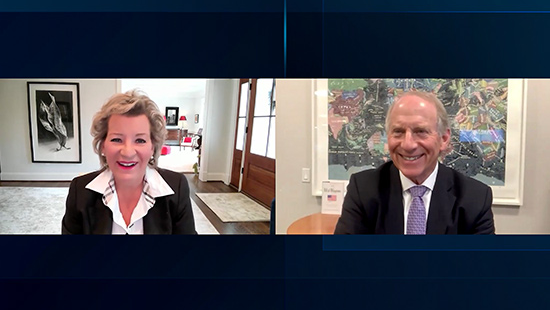2025 U.S. Economic Outlook with Moody’s Analytics Chief Economist Dr. Mark Zandi

2025 U.S. Economic Outlook with Moody’s Analytics Chief Economist Dr. Mark Zandi
January 15, 2025
Wednesday 1:00 p.m.-2:00 p.m. ET
What lies ahead for the U.S. and broader economy in 2025? Dr. Mark Zandi joined us for an in-depth analysis of important trends impacting the economic landscape, such as consumer spending, labor markets, inflation, real estate and more. He provided insights into public policy decisions facing the White House and Congress that could affect tax rates for U.S. households and businesses. As you plan for the year ahead, watch this replay to learn more about the challenges and opportunities shaping the economy today.
Watch webinar replay
[MUSIC PLAYING]
(DESCRIPTION)
A title slide appears, Wednesdays with Woodward (registered trademark) Webinar Series.
A video conference begins. A video of Joan Woodward appears in the corner of the screen. The image on the rest of the screen depicts a laptop with the title slide on a desk with a Travelers coffee mug and a small plant.
(SPEECH)
JOAN WOODWARD: Hi. Good afternoon, everyone, and thank you so much for joining us. I'm Joan Woodward, President of the Travelers Institute, the public policy and educational arm of Travelers. I'm thrilled to be here with you today. Welcome to Wednesdays with Woodward, a webinar series we started at the beginning of the pandemic, where leading experts explore today's biggest challenges.
So before we get started, one, I just want to let everyone know that our hearts, our minds, and our thoughts and prayers are with everyone in the California fires, and we will do our level best to help all of our insureds.
(DESCRIPTION)
Slide. Text: About Travelers Institute (registered trademark) Webinars. The Wednesdays with Woodward (registered trademark) educational webinar series is presented by the Travelers Institute, the public policy division of Travelers. This program is offered for informational and educational purposes only. You should consult with your financial, legal, insurance or other advisors about any practices suggested by this program. Please note that this session is being recorded and may be used as Travelers deems appropriate.
(SPEECH)
And before we also get started, I want to briefly review our disclaimer about today's webinar.
(DESCRIPTION)
Slide. 2025 U.S. Economic Outlook with Moody's Analytics Chief Economist Dr. Mark Zandi. A list of seven logos appears, including Travelers and six others.
(SPEECH)
I would also like to thank our co-hosting partner organizations. Moody's, first of all, thank you. Master's in FinTech Technology Program at the University of Connecticut Business School, the Darla Moore School of Business at the University of South Carolina, MetroHartford Alliance, the National African American Insurance Association and the National Association of Professional Insurance Agents.
So OK, let's get into this. The economy in 2025. What's in store for all of us, our businesses, our companies, our personal lives and our families? After several interest rate cuts at the end of 2024, what may the Federal Reserve do for us this year? How might the new administration impact fiscal policy and other really important legislative priorities for our country? And really, most importantly, what it's going to mean for you.
(DESCRIPTION)
Slide. Two headshots appear. On the left, Joan Woodward, Executive Vice President, Public Policy; President, Travelers Institute, Travelers. On the right, Mark Zandi, Ph.D., Chief Economist, Moody's Analytics.
(SPEECH)
So today, we're so fortunate to have leading economists and thinkers on this program in the last couple of years, helping us to really think through what's going to happen. For some of our most popular sessions, we've had economists, and today is no different. Today, our New Year's gift to you is none other than Moody's very own Chief Economist, Dr. Mark Zandi. I've known Mark for a long time, and he is certainly one of the leading authorities on the U.S. economy as well as the global economy.
I'm going to venture a guess that most of you already know Dr. Zandi. He directs economic research for Moody's, one of the most well-known global rating agencies and a leading provider for data, intelligence and analytical tools. He has a Ph.D. in economics from the University of Pennsylvania, is the author of several books, is widely cited in the news and regularly testifies before the United States Congress. He previously served as the founder of Economy.com, which was acquired by Moody's in 2005.
You're in for a real treat today, folks. Mark, thank you so much for joining us.
(DESCRIPTION)
The video feeds of both speakers fill the screen.
(SPEECH)
We have over 7,000 people who are joining us today on the session, so kudos to all of our audience members for being so engaged in this topic. Mark, the floor is yours.
MARK ZANDI: Well, thank you, Joan. It's a pleasure to be with you. Thank you, Travelers, for the opportunity. It feels like you could have sold tickets. I don't know, Joan.
JOAN WOODWARD: Oh yeah, Mark. Maybe next time.
MARK ZANDI: Taylor Swift--
JOAN WOODWARD: It's all you.
MARK ZANDI: Maybe Taylor Swift will-- can rival her at some point, but that's dreaming. But anyway, my task is to-- thank you so much for the opportunity. And it's my task to give folks a sense of where I think the economy is headed here over the next year or so. I'll focus on the U.S. economy, but if folks have questions about what's going on overseas, happy to entertain those as well.
(DESCRIPTION)
Dr. Zandi's video feed fills the screen.
(SPEECH)
Just the bottom line. I'm going to make the case that the economy coming into 2025 is performing exceptionally well, certainly in the aggregate. There's distinctions to be made across income groups and [AUDIO OUT] and parts of the country, but in aggregate, in its totality, the economy is performing very well and can weather a lot of potential storms.
And there are a few potential storms on the horizon, which we're going to talk about. But I think, on the other side of 2025, we'll conclude that it was another good year. Not as good as 2024. That was a really good year. Hopefully you soaked that in. That's about as good as it gets. But it should be a reasonably good year.
So with that as an introduction, let me share my slides.
(DESCRIPTION)
Dr. Zandi's video feed sits in the corner. The slideshow resumes. Slide: 1, The Economy is Performing Well.
(SPEECH)
With the economy's very strong performance-- pick your statistic. The economy is performing very well. Very strong growth. GDP, that's the value of all the things that we produce, that grew almost 3% in 2024. Tracking about that in the fourth quarter. We'll get that data point here relatively soon. So anything above 2% that is not inflationary is pretty darn good. That's very, very strong growth.
Lots of jobs. Average monthly job growth, it feels like, after you abstract from the vagaries of the monthly data, somewhere around 150,000 per month. Maybe a little higher than that. That's very good. That's enough job creation to keep the unemployment rate from rising, keeping it low. And it's low. The unemployment rate is near 4%, where it's been now for almost three years. That's very consistent with a full-employment economy.
And inflation, which had really been the blemish, the real one blemish in the economy, that even-- that too has come in. We got a data point today for the month of December, the consumer price index, CPI, it came in relatively soft, consistent with the Federal Reserve's inflation target and one reason why markets are off and running today, stock market. Lots of green on the screen, if you've taken a look. Bond yields are down, which is very encouraging.
(DESCRIPTION)
Slide: The Federal Reserve Achieves Its Dual Mandate. A graph, percent versus years depicts two lines. A blue line, unemployment rate percent, shoots up beyond 8 at a point labeled Pandemic Shutdown, before leveling off at a point labeled American Rescue Plan. A green line, labeled PCE Deflator percent change year ago, trends upward at a point labeled Delta and Omicron Waves, to a peak at a point labeled Russian-Ukraine War, before lowering at a point labeled Immigration Surge. Sources: BLS, Moody’s Analytics
(SPEECH)
And the Fed has effectively achieved its targets. As you know, the Federal Reserve has a dual mandate of full employment, which I mentioned is an unemployment rate of around 4%, and inflation that's low and stable, which the Fed defines as close to 2% inflation. That's based on the growth in the consumer expenditure deflator.
And I'm showing you here in the first slide both measures. The unemployment rate. That's the blue line. And the inflation rate as measured by the growth in the PCE deflator, the consumer expenditure deflator. That's the green line. And you can see that unemployment has been hovering around that 4% kind of threshold here for quite some time.
And I should say-- I'll point out that it's low across every demographic-- age, educational attainment, ethnicity, gender. Just, from coast to coast, it's low and stable. And as you can see, unemployment-- excuse me, inflation has come in as well. Still a bit elevated.
But the only difference between where inflation is and the Fed's inflation target of 2% is the growth in the cost of housing services, of homeownership, which is very difficult to measure. And that is now moderating in a consistent way. And so everything feels like we're going to be at the Fed's-- the Fed is going to have hit its targets on the nose here over the next few months.
And that's obviously a key reason why the Fed has been cutting interest rates up until the current point in time, cutting rates from a peak of about 5.5% on the funds rate target back this past summer to closer to 4.5% today. So still high but moving in the right direction.
And I do think prospects are good. The economy's on good fundamental-- solid fundamental ground.
(DESCRIPTION)
Slide: Consumers Will Continue To Do Their Part. Wage growth by wage quartile and consumer price inflation, percent change year ago. A line graph depicts six similarly shaped lines, labeled Lowest, 2nd, 3rd, and Highest Quartile, as well as Overall and CPI. The lines trend upward in mid 2022 before leveling off. The CPI line peaks higher than the others, and levels off lower than the others.
(SPEECH)
And the key to growth here is the consumer. The American consumer drives the train. And plenty of reason for the consumer to keep powering forward in spending.
You can see that here. This shows the relationship between wage growth. And this is-- I'm showing you wage growth across the wage distribution, different quartiles of the wage distribution. So for example, the green line represents the growth in wages for folks in the bottom quartile of the distribution, the bottom 25% of the distribution.
And I'm relating that visually to inflation. Here, I'm measuring inflation by the consumer-- the growth in the consumer price index, the CPI. That's the blue line. And you can see, if you look at the current period-- this is data from 2019 through October or November. You can see that wage growth across the wage distribution is outpacing inflation. And this has now been the case for just about two years.
This means that people's so-called real wages are rising, their purchasing power is improving, and the American consumer often generally spends what it earns. And so as long as this picture holds, as long as wage growth continues to outpace inflation, and there's no reason to suspect that it won't, that that will continue for the foreseeable future, that's the fodder for ongoing spending growth.
And as long as the consumer is spending, because it's such a large piece of the economy, part of the economy, that means the overall economy is going to be just fine. And I would just point out that the American consumer drives the train here, the economic train here, but also globally. Consumers buy everything we produce here and everything-- a lot of what is produced overseas, thus the trade deficit.
And so the American economy, for really the first time in a long time, is leading the way globally. And if you go back into the teeth of the pandemic, when we had the shutdowns, or back in the global financial crisis a generation ago, it was the Chinese economy that led the way out, that was kind of driving the train. But not so this go-around. It's the American consumer and the American economy that's doing the heavy lifting.
One other quick point before I move on, you will note that if you go back to 2021, certainly in '22, coming into '23, the blue line, inflation, was above wage growth. So people's purchasing power was eroding during that period. And I think this goes to why there's this very significant disconnect between the happy talk you're hearing from me and other economists and the general perception of Americans of how well the economy is doing.
I think people are having a great deal of difficulty getting beyond what happened back in '21, '22, with the run-up in prices, particularly for things they need to buy. Groceries and rent and, to a lesser degree, energy, all those things jumped in price during that period, in large part because of the pandemic and the disruptions it created, and equally as important, the Russian war in Ukraine, which caused agricultural and energy prices to spike.
And those two shocks, the pandemic and the Russian war, kind of conflated and affected inflation expectations. And that's when the Federal Reserve went on high alert and started jacking up interest rates. But it's that period back a couple, three years ago, when people's real wages were falling very rapidly, that people are having a hard time getting over.
The other thing to consider is that during that period, lower-income households did turn to credit cards and consumer finance loans, buy now, pay later loans, to-- in an effort to supplement their income to maintain their purchasing power in the face of that higher inflation. And of course, it's one thing when rates are low, the debt payments on that debt is manageable. But now, with rates a lot higher, it's become much more difficult. And we've seen a pickup in delinquencies and defaults on cards and consumer finance loans.
Fortunately, again, with the improvement in real wages more recently and a tightening in underwriting standards, those credit problems are-- the worst of them are behind us. The credit conditions are starting to improve. So even lower-income households are doing better at this point. But it's going to take a while, I think, before the American consumer really-- that most Americans really buy into the idea that the American economy is performing as well as economists suggest that it is.
(DESCRIPTION)
Slide: Particularly the Well-To-Do. Personal savings rate across the income distribution, percent, four-quarter M.A.. A graph depicts seven similarly shaped lines, labeled Population, 0 to 19.9%, 20 to 39.9%, 40 to 59.9%, 60 to 79.9%, 80 to 89.9% and 90 to 100%, The lines peak in mid 2020. Most dip in 2023, except for 90 to 100%. Sources: Federal Reserve, Moody’s Analytics
(SPEECH)
One other quick point that is important to recognize is that a lot of the spending that's being done is being done by the very well-to-do, folks with high income and high net worth. I mean, the run-up in stock values until recently, the record-high housing values, has really helped to lift wealth. And the so-called wealth effect, the positive wealth effect, has really allowed folks in the top part of the income distribution to lower their saving rate.
And because they do the bulk of the saving, if they lower their saving rate, that implies a very significant lift to spending overall. And you can see that here. This shows the saving rate across the income distribution. That kind of yellow line that is at the top of the chart is the saving rate for folks in the top 10% of the income distribution. And you can see, they do a lot of the saving, and they have allowed their saving rate to come in. It's still very high, the highest among all the income groups. Not a surprise. But that decline represents a lot of spending, a very significant pickup in spending.
I will point out that that does highlight a potential vulnerability in the economy. I mean, if high-income households are spending aggressively because of their higher wealth, their net worth is higher because of the run-up in stock and housing values, that does mean that if stock prices were to falter in the context of this recent run-up in bond yields that's clearly a possibility, that could be an impediment to those consumers-- those high-end consumers continuing to spend like they have been. And that could become a broader threat to economic growth.
But for the time being, consumers are doing their thing, and that augurs well for the economy going forward. So I feel good about the economy here. I mean, again, I don't expect 2025 to be as good as 2024, at least in the aggregate, the top-line numbers, but it should end up being pretty good. But let me now turn to a couple of-- I'm going to buy this happy talk, this optimism, back a little bit. Talk about some of the potential risks that are dead ahead.
(DESCRIPTION)
Slide: 2, But Economic Policy is Highly Uncertain.
(SPEECH)
And No. 1 risk is economic policy. The incoming Trump administration is going to change policy to a significant degree. And to what degree is hard to know. It's highly uncertain. But I do think it's fair to say that we will see higher tariffs, and we will see much more restrictive immigration policy. And that would imply a significant pickup in deportation.
(DESCRIPTION)
Slide: Trump Tariff War Redux, U.S. Import Duties, percent of imports. A graph depicts three lines. Two lines, labeled Total and World except China, are relatively similar, even extending into projected areas, beyond 2025. The third line, labeled China, rises from the others at a point in 2019 labeled Trump trade war begins. It levels off in 2020 at a point labeled Phase One agreement to halt tariff increases takes effect. It stays steady until a period labeled Tariffs hit 40% on Chinese imports by Dec 2025 and 5% for the rest of the world. Total effective tariff rate hits 10%. It then shoots up in the projected area in 2026, before sinking at a point labeled Tariffs slowly fall, stabilizing around 10 percentage points higher for China by the end of 2027 and returning to original levels for the rest of the world by the end of 2026. Sources: Census Bureau, Moody’s Analytics
(SPEECH)
And this gives you a sense of what the higher tariffs might look like. This is our so-called baseline assumptions around the tariffs that the new administration is going to impose, "baseline" meaning in the middle of the distribution of possible outcomes. So clearly, given the uncertainty, President Trump may decide not to impose tariffs to this degree, or conversely, he could impose them to a much more significant degree.
There's been a lot of discussion and debate about this, but I do think it's important to recognize that President Trump, if his first term is any guide, he's going to do what he said he was going to do in the campaign. Maybe not to the degree that he said he was going to do it. That clearly could be politics and posturing and maybe even a bit of negotiating going on. But he's going to follow through.
So I feel strongly that we will see higher tariffs. But I don't feel strongly about how high, on which products, on which countries. But this shows you our baseline view. And you can see the red line represents the so-called effective tariff rate. So that's the-- you just take all the revenue that's generated from tariffs, divide by the value of imports that are subject to the tariffs, and that's your effective tariff rate.
You can see it's still very low. I mean, it did rise a bit in his first term. It was close to 1% before he became president back in 2017. It rose-- It's now 3%. And you can see, by the end of this year, we're expecting the effective tariff rate to be just about 10%. Not for long, but for a brief period of time. And then it will start to come back in.
And you can see how we break that down into the tariffs on China. That's where I would expect the tariffs to be most significant. And you can see, I do expect them to get as high as 40% on Chinese imports into the United States. And the rest of the world, that's the blue line, so not quite as significant.
So I would expect that. And I do expect that the higher tariffs will put upward pressure on inflation. I mean, if the tariffs imposed in President Trump's first term are any guide, there's been a number of good academic studies that shows that the bulk of the tariff increases are passed through to American consumers. They pay the higher tariffs in the form of higher prices.
We are also assuming, and I think it's reasonable to assume, that there will be some retaliation, that other countries that are going to suffer the higher U.S. tariffs on what they're sending into the United States, they are going to respond. Some countries like China, I expect that to be tit for tat. Whatever we do, they're going to respond in kind.
Some countries will respond partially, some countries not at all, deciding that that's a better strategy to address the U.S. tariffs. But I do expect some increase in retaliation, which also will put some pressure on parts of the economy, like the manufacturing sector and the agricultural sector, pretty much like in the first term.
The one other area that I think is important to-- one other point that I think is important to mention is that the tariffs create a lot of uncertainty among businesspeople. Businesspeople don't know which products, which countries, how long are the tariffs going to be in place? It's going to take a while to sort all of that through. And I think that may be one of the more longer-lasting, pernicious effects of the tariffs, is that businesspeople will sit on their hands.
They won't make major investments. They won't know where to locate. They won't know where to expand. They won't know what part of the supply chain that they should be focused on and how to adjust to the tariffs for a while. And that could be an impediment to new investment spending and, I think, generally a negative for economic growth.
(DESCRIPTION)
Slide: Less Immigration, Weaker Population and Labor Force Growth. A line from 1990 to 2025 and beyond depicts the net population change. It dips in 2020 before rising up to 2024, then dips again. Bars in two sections fill in the area below the line at regular intervals, depicting the difference between net migration and natural population change. Source: U.N., Moody’s Analytics
(SPEECH)
As I mentioned, there will also be some significant tightening down in immigration. There already has been. President Biden passed an executive order on asylum seekers back last summer, which has been quite effective in curtailing the amount of immigrants coming across the southern border. But I expect some further measures, and I do expect some deportation.
You can kind of see the end result of all that in terms of its impact on population growth back to 1990. This is annual data. And you see our forecast here going forward. And you can see we expect that population growth will slow quite substantially because of the tightening down in immigration law and the impact on the number of immigrants coming into the country.
That has also significant effects on economic growth. One reason why the economy was able to grow 3% last year-- GDP growth, remember I mentioned the 3% number-- without generating inflationary pressures is because there was a surge in the number of people coming into the labor force, looking for work and getting work. Many of those were immigrants.
So if you have fewer immigrants coming into the country and with the economy at full employment, 4% unemployment rate, that suggests that growth will throttle back. You just don't have as many people that are going to be out there working. And it can be potentially disruptive if there's significant numbers of people that are deported. Certain industries rely very heavily on immigrants. The construction trades are a great example.
Just about-- just under a third of all the workers in the construction trades are immigrants. It's not all unauthorized or undocumented or would be impacted by the immigration law-- the changes in immigration law. But just to give you context. And of course, those construction workers are critical to producing housing. We have a very severe shortage of housing, both rental and for homeownership.
And if you have less housing, you'll get higher rents and prices. That will translate through into higher inflation. So this too will be an inflationary-- directionally inflationary along with the higher tariffs. And so I do expect this to be a bit of a challenge. Obviously, a lot depends, again, on exactly what the Trump administration has in mind and what they actually do. And it's very unsure what they will do. But directionally, this would suggest that we're going to get somewhat diminished growth in 2025 and somewhat higher inflation than otherwise would be the case.
(DESCRIPTION)
Slide: 3, And There Are Many Threats.
(SPEECH)
There are a number of other risks that I want to call out. I'm not going to spend a lot of time because I am running out of time.
(DESCRIPTION)
Slide: A chart labeled "What Could Go Wrong" depicts Likelihood of Risk versus Economic Severity of Risk. A diagonal from the origin increases likelihood and severity. Various points on the chart are labeled with risk factors, including Labor Strife and Climate Change Transition in the bottom left, and Global Trade War and Bond Market Meltdown toward the top right. A color-coded key in the corner identifies items in blue as "New Risk," of which there are none, items in green as "decreased severity," including Stock Market Selloff and Oil Prices Spike, and items in red as "increased severity," including Major Cyberattack, Global Supply Chain Disruptions and Terrorist Event.
(SPEECH)
But we are economists. We are focused on the threats to the economy's performance. Moody's, my clients, many of them are financial institutions like Travelers. And in many cases, they only participate on the downside. So we spent a lot of time thinking about what could go wrong.
And this so-called, what we call a risk matrix, is, I think, useful in trying to get your mind around all the different threats and risks that are out there. The x-axis is the severity of the risk. I kind of think of it like a present value of economic loss if the risk were to occur. So if the risk occurred, it not only accounts for the loss at the time of the risk, but also the timing of the risk. So for example, you can see climate change transition risk all the way over to the left of the x-axis. I think this is a significant risk to the economy, but it's going to play out over a longer period of time.
The y-axis, the vertical axis, is the probability of the risk, the likelihood. So for example, if you go up into the northwest part of the matrix, low-income household financial distress, I talked about this earlier. This has happened. So a very high probability. But the fallout on the economy, the broader economy, relatively low because it's the folks that are at the bottom end of the income distribution and don't play quite the role-- the same role as the folks in the top part of the distribution in driving consumer spending and economic growth.
So you really want to focus, obviously, on the risks that are in the northeast part of the matrix, high severity, high probability. And I do want to call out what I consider now, other than the global trade war, the tariffs, the problems in the bond market. I'm sure you're well aware. I haven't looked today. I think bond yields are down a bit.
But abstracting from today's action, the 10-year Treasury yield is up a little over a percentage point over the past four months. If you go back to mid-September, the 10-year was like 3%-- I'm making this up, but roughly 3.5%, 3.6%. Now it's kind of 4.6%, 4.7%, I think even as high as 4.8% yesterday. So that kind of gives you a context.
And I think there's a boatload of things going on here, some of which goes back to economic policy, right? I think, if we get tariffs and more restrictive immigration, and that is inflationary-- and I think bond market-- bond investors are beginning to discount that, inflation expectations have risen here-- that's part of the story. That's part of what's going on.
(DESCRIPTION)
Slide: On an Unsustainable Fiscal Trajectory. Ratio of U.S. federal debt held by the public and GDP percent. A line on a graph remains below 40 from 1970, through high inflation and interest rates, until it bumps above 40 in the '90s during the Clinton welfare reform. It levels off at 9/11 before spiking at the Great Financial Crisis, leveling off at Trump Tax Cuts, and spiking in 2008 at a point labeled Pandemic, to the line at 100. A projection shoots the line up to 160 beyond 2030, labeled C.B.O. outlook with no policy changes. Sources: U.S. Treasury, BEA, Moody’s Analytics
(SPEECH)
I think there's also a concern about the nation's fiscal health. And you can get a clearer sense of that here. This shows the nation's debt-to-GDP ratio. This is the publicly traded federal debt as a ratio to overall GDP. And you can clearly see the ramp-up in debt that's occurred since the financial crisis. That reflects the crisis and the policy response and, of course, what happened during the pandemic, the hit to the economy, as well as the very aggressive response to that, fiscal response to that, in terms of taxes and spending.
And now we're sitting with a debt-to-GDP ratio literally of 100%. And you can see it wasn't long ago we were at 30%, 40% on a pretty consistent basis. And then take a look at the forecast. That's from the CBO, the Congressional Budget Office. And that's if there's no policy changes. And there's going to be policy changes here. The other thing that the incoming Trump administration is going to do is it's going to extend the expiring tax cuts for individuals that were passed in President Trump's first term, the so-called Tax Cut and Jobs Act, the TCJA.
Under that piece of legislation, the tax cuts for individuals will expire at the end of this year. That will be extended. That will be part of what happens here in Congress in 2025. And also, there will be, in all likelihood, more corporate tax cuts. As a result of that, you get this line.
That's what happens under current law. Now, it could be the case that the Trump administration will figure out ways to come up with some savings in terms of cuts in spending or maybe more tariff revenue, and that could offset it. But my sense is that, in all likelihood, it's going to be hard for them to bend this line to a significant degree, given where the discussion is at this point with regard to fiscal policy.
There's some talk about government efficiency and the so-called Department of Governmental Efficiency, DOGE. But based on historical experience with these things-- I think it's a great thing that we're taking a look at the efficiency of the government and trying to improve it, but I'm skeptical we're going to make a lot of progress there. So I do think this is an issue. And I think bond investors are nervous about this and one of the reasons why we've seen long-term interest rates start to rise here to a significant degree.
There's other factors. The bond market is-- the plumbing is fragile. The big-broker dealers that make the market, they haven't been willing or able or whatever to expand their balance sheets to be consistent with the growth in the amount of debt outstanding. This may go to capital requirements, liquidity requirements, may go to some concerns about the business model altogether as a lot of the trading is being put onto platforms, central clearing.
For whatever the reason, because you have-- the balance sheets aren't as large as they were, it's making the trading in the market less efficient. And it's adding to the volatility that we're seeing in yields, the big moves. When I first started looking at the bond market 30 years ago, a 2-basis point move in the 10-year yield in a given day was a big deal. Now, take a look at this morning. It moved maybe 10 or 15 basis points within a few seconds. And that gives you a sense of the volatility.
There's also the Federal Reserve's quantitative tightening. They're exiting out. The Japanese and Chinese, which are large global investors in Treasurys, they've been more circumspect, for obvious reasons. The banks have been cautious in their buying of Treasurys, given what happened to them a couple years ago with the banking crisis, when their bond portfolios were turned upside down.
And it's the hedge funds that are coming into the market and filling the void left by the Fed and global investors and the banks. And they are obviously incredibly price sensitive. They're there when times are good. They're out of there immediately, en masse, when they're not, again, creating a lot of volatility.
So I think the market, the bond market, feels incredibly fragile. We've got the debt limit battle coming up. So our baseline, kind of in the middle of the distribution of possible outcomes, has it that the Federal Reserve-- that, excuse me, the 10-year Treasury yield is close to its peak now, that it'll continue to trade somewhere in the mid 4s, 4 1/4, 4 1/2. That seems like where it should be in the long run. But I do think there's a meaningful risk that we could see much higher long-term interest rates. And that would be a problem pretty quickly.
You're already kind of feeling that in the housing market. Fixed mortgage rates are back up over 7%, not only because of the 10-year yield, but because of the spread between mortgage rates and 10-year yields have widened out, in part because of all that volatility and what it means for the value of the prepayment option in those mortgages. So the housing market is already going to take it on the chin. Home sales are already very weak, and they're not going to come off bottom here with fixed mortgage rates that are above 7%. So this is already doing damage, but a very significant risk.
(DESCRIPTION)
Slide: U.S. and China Decouple and Tensions Intensify. Three starbursts compare China and the United States production flow between industries and industry total output as share of global economy in 1996, separate but smaller, 2018, together and the same size, and 2023, separate and the same size. Sources: OECD, Moody’s Analytics
(SPEECH)
Finally, I just want to call out one other risk. And again, the obvious. And that is the relationship between the United States and China, which feels like it's not going to get any better anytime soon. It's moving in the wrong direction here. You can really get a sense of that here in this starburst chart. This shows, by year, the relationship-- or excuse me, the flows between different industries across countries around the world.
This is data that comes from the OECD. You can see the first starburst is for 1996. This was pre China's entry into the WTO, World Trade Organization, which occurred in 2001. 2018, that was right when the first trade wars with China began, in President Trump's first term. And the most recent data, which we just recently produced this-- we produced this. OECD didn't produce it. We produced it. 2023. The green bubbles represent industries for the U.S. and where they line up in terms of global trade.
And you can see, back in 1996, the U.S., industries were large. The size of the circle represents the size of the industry in terms of value added. In the middle of the starburst-- so global trade ran through-- completely ran through the United States. China industries are represented by the blue circles. Look at 2018. Both China and the U.S. were kind of smack dab in the middle of the global trade flows. The U.S. bigger. But the industries are bigger. But you can see they're right-- and fully integrated. Highly coupled together.
And then take a look at 2023. Pretty rapidly-- part of this may be the-- certainly the trade war back in 2018, '19, but also the pandemic. You can see we've now completely decoupled, and we're moving quickly apart. And for understandable reasons-- I mean, a lot of national security issues. I mean, I think it is appropriate to push back on Chinese trade practices and other economic policy that's not fair. They're not playing by the rules.
But obviously, no one wins here. The world is a loser in all of this, not only from an economic perspective, but I do think it makes it much more geopolitically unstable. I mean, it's not a good thing if the two largest economies on the planet are decoupled with each other. It's much harder for one of them to hit the other on the head when they're hugging each other. Much more likely that there will be a problem if we're decoupled, like we are.
And we're clearly moving in that direction here. And that will certainly happen in the wake of the next round of tariffs in the next round of the trade war that's dead ahead of us. My baseline is that we'll be able to navigate through this. Cooler heads will prevail, and we'll figure it out reasonably gracefully, and we'll get another good year. But obviously a lot of risk around that.
So with that, I think I took my allotted time. I walked through all the slides. I'm going to stop sharing them.
(DESCRIPTION)
Slide: Moody's. Thank you! Check out our podcast for weekly updates. An image depicting Benjamin Franklin's portrait on the hundred-dollar bill appears behind text. Moody's Talks. Inside Economics, Perspectives on the evolving economic landscape. Text: Please attribute information in this document to Moody's Analytics, which is a division within Moody's that is separate from Moody's Ratings. Accordingly, the viewpoints expressed herein do not reflect those of Moody's Ratings. Contact us: Email, help economy at Moodys dot com. U.S./ Canada, 1-866-275-3266. EMEA, 44-20-7772-5454 (London), 420-234-747-505 (Prague). Asia/Pacific: 852-3551-3077. All Others: 1-610-235-5299. www dot economy dot com.
(SPEECH)
And Joan, I'm going to turn it back to you.
JOAN WOODWARD: Certainly. Mark, thank you so very much. That was really great. Just a quick jaunt around the world. And what we like to do, Mark, on the show is-- by the way, I want you to be able to mention your podcast. You had a last slide there. You have a podcast, and that's available for anyone to join. Do you want to let us know--
MARK ZANDI: Yeah. You're very kind. Yeah. Inside Economics. You know, Joan, we're coming up on our 200th episode. Almost four years. And it's myself and two of my colleagues, Cris deRitis and Marisa DiNatale. And if you're a nerd-- and Joan, I sense you're a bit of a nerd.
JOAN WOODWARD: I totally am a nerd. Economic.
MARK ZANDI: You're a nerd. You're a nerd. A well-dressed nerd, but a nerd nonetheless. But if you are a bit nerdy, I think you'll enjoy the Inside Economics. We talk a lot about the economic data. We have lots of guests. It's a lot of fun. So I really appreciate you giving me the opportunity to plug it.
JOAN WOODWARD: Sure, sure. OK. So Mark, what we like to do on the show is we like to turn the tables and ask our audience a audience polling question. And this really helps inform what we're going to talk about for the next half hour. So everyone out there, as they say, turn on your activity.
What economic factor are you most concerned about? You only get to choose one, guys, so don't choose more than one. We want to get a pure understanding of what your business-- and again, these are thousands of people, Mark, in the insurance industry, as well as other financial services industry, who join in here. What are you most concerned about for your business?
And it's always pretty interesting to see, because we economists like to think we know what people think about and what they're worried about. But it's good to get a raw, kind of unscientific-- and this is all anonymous, everyone. So we're going to give you another 10 seconds, and then we're going to halt the poll here. So it looks like, to me, inflation is coming in. Obviously global economic uncertainty.
Housing market. Something we didn't talk about yet, Mark, but I want to, especially given what's going on in California and given what's going on with labor. Interest rates, inflation, kind of coming in first, second. Housing we've got coming in strong. Global economic uncertainty, of course.
There's some we can control, Mark, with obviously our trade policies, and some we can't control, with regard to terrorism or other conflicts in the Mideast or in Europe. So what do you make of this, Mark, in terms of what you've seen in some of your data, and what this kind of is telling you?
MARK ZANDI: Well, I think they were listening to my talk, Joan. I mean, I talked about the No. 1 risk was interest rates, but driven by that concerns about inflation. So it feels like we're on the same page. But if I were going to-- you didn't allow me to-- the hosts and the guests could not participate. But if I were going to vote, I probably would have voted for interest rates, one, and inflation, No. 2. So that makes a whole lot of sense.
And of course, the housing market and stock market are very sensitive to interest rates. So that makes sense, right? So it all makes sense. It is encouraging that attracting and retaining talent is kind of lower on the list. I'm a little surprised. I guess if I had a surprise, that would be it. That's been one thing that businesses have been complaining about for quite a bit, over the last decade, abstracting from the pandemic shutdown. So that's interesting, that people aren't worried about that at this point.
JOAN WOODWARD: Yeah. Yeah. OK. So we have over 100 questions coming in from the audience. I like to look through them. And one of the ones has been, how is this economic environment, the cycle of economic ups and downs, different from previous cycles? And then I want to layer on top, which is always something I like to watch, which is the inverted yield curve, which as everyone knows, it's the difference between the 10-year and the 2-year.
But we've been inverted for a long, long time. We recently went positive last fall, but we were over a year of being inverted yield curve, which usually predicts a recession, and it did not happen this last inverted yield curve period. Why do you think we didn't go into a recession, given that was the No. 1 predictor of recessions for the last 40 years?
MARK ZANDI: Yeah. And that is the distinguishing feature of the last couple, three years, is that despite the pickup in inflation and the response, the very aggressive response, by the Federal Reserve to raise interest rates, that that did not push us into recession. And many economists-- not me, Joan, but many economists, including some of my colleagues on Inside Economics, thought we were going into recession. That was a big part of the conversation.
So that's what makes this period unique. I mean, the only other period in history where it feels like it's similar was in the '90s. Remember back mid-'90s? In fact, we had Alan Blinder on a couple of weeks ago. He's a Princeton professor who was the Vice Chair of the Fed at that time in the '90s with Greenspan. And they pulled off a soft landing. They pushed up interest rates aggressively in that period, and they were able to soft land the economy.
I think they were able to soft land it because they got kind of bailed out by the surge in productivity growth. The advent of the internet was really-- and the PC was really in full swing. And that made it a lot easier for them to get inflation back in without having to raise interest rates more. And the same kind of thing happened here.
All that immigration that we got. I mean, there's all kinds of challenges that posed to communities across the country. But the benefit of that I alluded to earlier was it increased the labor supply and cooled off labor markets at just the right time, and it allowed the Fed to forestall even further rate increases and may have been one of the reasons why we were able to navigate through without an outright economic downturn.
Now that you've got me plugging my podcast, I'll make one more plug, because one of the best episodes was with Campbell Harvey. Cam is a finance professor at Duke, and he popularized the use of the yield curve as a predictor of recession with his Ph.D. thesis. And I'm not going to tell you the ending. It's a cliffhanger ending. But you should go listen to it.
And he goes through all-- we go through all the gory detail, how you measure the curve, and what's the best way to do that, and what are the leads and the lags and all that kind of stuff. A lot of theories. My pet theory as to why the yield curve didn't work this go around like it did in the past is that, historically, leading up to recessions, in the period when the economy is very strong, you get a lot of borrowing and credit growth, and interest rates are low.
And then, once the curve inverts, because banks and financial institutions are having a harder time making money because they live off the spread between long rates and short rates, the net interest margin, they tightened down on their underwriting standards. And when they tightened down, the same borrowers that took on loans in the good times come back, need to refinance, and they can't get the loan, or they can't get the loan on terms or rates that make it work for them. And then they're forced into making cuts to their payrolls and investment because they have to make their interest payments. Or not. They default.
This go around, we didn't have that problem. Because of the financial crisis, we never saw that significant increase in credit growth. Banks had to capitalize to a higher level, more liquidity. Credit growth remained very pedestrian. Household credit growth never really took off. Corporate credit growth, until recently, was very pedestrian.
And so when the curve inverted, you didn't have a lot of borrowers coming back saying to the banks, hey, I need another loan. And therefore, you didn't have the same kind of dynamics play out. So I think a lot of it goes to just the idiosyncratic nature of the business cycle and the credit cycle that we're in.
The other quick thing is net interest margins probably don't mean the same thing today as they did 10, 20, 30 years ago for banks. I mean, banks, financial institutions, have gotten pretty good at managing their NIM and figuring out other ways to make money. And so you don't see the same kind of hit to their profitability when the yield curve inverts, and certainly not this go around, as you did in times past. And that may be another reason why.
JOAN WOODWARD: OK. Thank you for that. I want to go to something my audience is very interested in, which is the national debt, standing at nearly $37 trillion. Mark, you talked a lot about this, but I want to focus just on a couple aspects of it. So as you know, our Pentagon spends about $1 trillion a year, which is exactly what we spent last year on financing our debt. So interest payments on the debt went up because interest rates went up. Obviously, the debt ballooned.
And so the Social Security number last year was $1.3 trillion and growing, because all of us baby boomers, you and I, Mark, included, we actually want to retire someday. And so the stress of the Social Security Trust Fund going bankrupt in eight years, the confluence of new tax cuts. There was actually a balanced budget back in the early 1990s after the '93 tax increase. We got rid of the 30-year bond, right? Because Alan Greenspan said, there's going to be surpluses, as far as he can see.
So the federal government got rid of the 30-year bond at that moment. What moment are we in now? Obviously, this Congress, it's not popular talking about cutting spending, but there is a window of opportunity, probably mostly in the discretionary area versus the entitlement area of cutting spending. And again, you say this has been tried before. The Grace Commission, early 1990s. A big push to downsize government, which we did, by about 300,000 people.
Where do you see this playing out over the next year or two? Because as you know, in two years we'll have a midterm election, which will probably change the landscape again. So long-winded question of, how do you really think this is going to play out with the debt?
MARK ZANDI: Yeah. I don't think we're going to make any progress, Joan, on the debt, on the deficits and debt, at least not to a significant degree, until we're forced to do it. And if you remember back, the other feature of the 1990s, the reason why it played out so well, was the bond market. Remember the bond market vigilantes? That's when the bond market threw up all over the deficits and debt at that point in time.
And in fact, if you go back into that period in the early/mid-'90s, that's the last time interest expense on the debt, as a share of GDP or revenue, was as high as it is today. And it was the bond market that said, basically to Bill Clinton, who was president, and Bob Rubin, who was Secretary of Treasury, that you just can't do this. You got to address the deficit or debt. Otherwise, we're just going to jack-- the interest rates are just going to go up. And people can't afford homes, they can't afford cars, businesses can't afford to invest.
And Clinton and Rubin, to their credit, along with Gingrich and others, they came together, and they did-- they made some pretty tough choices. In that case, it was around welfare and welfare program. They got lucky with defense. Defense was coming down, not going up. We don't have that luxury today. But it was the bond market that forced the discipline.
And it may very well be the case that that's what's got to happen here. Because, at the end of the day, our legislators reflect us. And unless we understand-- the collective "us" understand why we need to do these things, we're not going to do them. And so you need something palpable that makes it clear to everyone out there that, look, there's a choice here. There's a Hobson's choice. There's no good choice, but we've got to make it.
We can't live with these higher interest rates. They're going to kill us. So we've got to turn around and think about how we're going to address our deficits. And Joan, in my view, it's got to be both revenue and spending. And it's got to be really around the medical, the Medicare and Medicaid. I mean, that's where the money is.
Discretionary spending, non-defense discretionary spending, is nothing. And that's where we've always turned for the last 30 years. And there's just literally nothing there. So if we're going to make any progress, it's got to be Medicare and Medicaid, because that's where the costs are, and that's where it's going to grow most quickly.
But we're also going to need more tax revenue. And we're going to have to come together, kumbaya. No one's going to want to do it, but we're going to be forced to do it. We're going to have to be forced to do it. And maybe what's going on in the bond market now is signaling that that time is at hand. I don't know exactly when that time is going to come, but it's going to come. And maybe this is the time. Maybe I'm wrong and rates are going to keep moving up here until the lawmakers actually do something substantively with regard to deficits and debt.
JOAN WOODWARD: OK. Great. I need to pivot because there's a lot of questions. So the next question is around technology. And generative AI is all the rage, of course, right now. What effects are you seeing from AI today? We certainly are using it in our insurance business, and we have been for a long time. We didn't call it artificial intelligence, but predictive modeling, etc. So what do you think is going to happen in the next two years or so with AI in the business world?
MARK ZANDI: I think AI is--
JOAN WOODWARD: [INAUDIBLE] new technologies out there that we don't know about yet.
MARK ZANDI: Yeah. Let me preface this by saying, look, I'm obviously forecasting many things. Some things I'm confident in, some not so much. This would be the not so much. And economists like me, we rely on history to make an assessment of what we think is going to happen in the future. So we go back and look-- if you go back and look at other very massive technologies-- internet, electrification, wireless, all these things-- it takes a long time for those technologies to find their way sufficiently into the business, into business practices, that it affects underlying productivity growth and really affects the broader economy.
Now, AI might happen a lot quicker. It feels like it's happening quicker. But I suspect it's going to take some time. It's not a game-changing event next year or the year after. But if you look over the next 10 years, then you'll look back and say, oh, there it is. It had a very meaningful impact.
One reason why-- and I know there's a lot of questions, so I won't go on. But one other reason why it takes so long, if history is a guide, is that most of the change actually occurs-- the productivity gains and everything else and what it means for the economy only happen with new businesses, when new businesses form and optimize around the new technology. When legacy businesses try to adopt the technology, like a Travelers or a Moody's, that's hard.
It's hard because you don't have the right people. You don't have the right capital. You don't have the right skill sets. You got to restructure yourself. You got to figure it out. And by the way, at the same time you're doing the AI, all those other things that you could have been doing to improve productivity, you may or may not have the resources to do it. So you're taking a bit of a chance to invest in the AI as opposed to the what I call business-as-usual productivity-enhancing activities. So it's usually when you see businesses form. So therefore, it takes time. It's not next year. It's a next-10-year kind of thing.
JOAN WOODWARD: OK. Good. Let's shift again to the housing market and kind of consumer debt. So question one. It's hard to know, but do you think the housing market is going to get easier for first-time homebuyers? I mean, low inventories, high median home prices. Almost $500,000 across the United States is the median home price. That's question No. 1.
Question No. 2, are you worried about rising consumer debt? So auto loans. There's three or four million people who are more than 90 days delinquent on a car loan. Does that concern you? Credit card balances are also going up. What are you thinking about housing and consumer debt?
MARK ZANDI: Yeah. On housing, the question is, do I see any improvement for first-time homebuyers? No, I don't.
JOAN WOODWARD: No?
MARK ZANDI: Not at all. I mean, with mortgage rates where they are, and they don't feel like they're going to come in, for some of the reasons I talked about earlier. If we're at 7%-plus on the fixed mortgage rate, the housing market, home sales are going to be in the deep freeze. There's just no chance because you got-- the average coupon in an existing mortgage is 4%. So no one with a 4% mortgage, or very few, unless there's some big demographic shift in their circumstance, is going to go from a 4% mortgage to a 7% mortgage. They're going to be stuck in place.
And so I don't think the housing market thaws until mortgage rates are closer to 6% and headed into the 5s. And at this point, given everything that you can see, what's going on in the bond market and all the other things that are driving it, that's just not happening anytime here in the near future. So you mix high mortgage rates, no supply with high house prices, and it's just no.
The only way-- really, if we're going to address this issue in a more substantive way, we've got to build more homes. So policymakers have to think about how to incent the private sector to build more homes. And there's got to be ways of-- I've thought a lot about partnering public subsidy with private capital, like the LIHTC program is a great example of that in the rental market. But do that more broadly to try to incent more building. And then, of course, you've got to address zoning and permit. There's a lot of issues. But no, I don't see this resolving itself anytime quickly.
With regard to the debt, from a macroeconomic perspective, I'm not worried about it because it's too small. I mean, the amount of-- if you look at credit card debt outstanding, it's $1.1 trillion. It sounds like a lot, but it was $1 trillion before the pandemic. Consumer finance debt is $500 billion. It's not enough for it to become a macroeconomic concern.
I do worry about what it means for the people with that debt. So lower-income households that have taken on that debt, they're struggling, and they're paying a very high interest rate. If you look at the average interest rate on a credit card, 22.5%, 23%. That's Federal Reserve data. That's the highest that rate has ever been in the history of the time series.
And the spread of cost of funds is very high for lots of different reasons. And so, for those households, this is very financially painful. And that's why we're seeing delinquencies and repossessions and defaults. But from a macroeconomic perspective, it's not big enough to really make a meaningful dent.
And the other thing I would say is, the worst is behind us. If you look at-- I get all the credit files in the country every month from Equifax. And so I saw the data for December. And if you look at the delinquency rate on cars or consumer finance or retail credit cards or pick your product line, the peak in delinquency was back in the summer. So that's going to start translating in lower charge-off rates here in 2025. So even from that perspective, it feels like the worst is behind us.
JOAN WOODWARD: OK. Good. Good to hear. Let's move on to the housing market and interest rates. So obviously the Fed cut interest rates for 100 basis points last year. What is your baseline assumption for how many rate cuts we're going to see this year? And could anything stop that?
MARK ZANDI: Yeah. At this point, I expect two rate cuts at the end of the year. I don't expect anything here for a while, just because of the uncertainty around policy. If you go back and read the FOMC minutes from December when the Fed cut rates, there was a lot of conversation around, well, what do these tariffs mean? What does the immigration policy mean for inflation and growth? We don't know. We'll have to wait and see.
So in the context of inflation that's still a bit elevated and the economy is doing quite well-- we talked about growth in all the jobs and low unemployment-- I think that means they sit on their hands. But by the end of the year, I think we'll have more clarity around policy. And at that point, it'll become clearer that the bigger problem is growth, not inflation. And as a result, they'll start cutting rates, normalizing rates again.
The other thing to consider is that the so-called equilibrium rate, that rate at which policy is neither supporting or restraining growth, is elevated right now for lots of different reasons. It's going to come down over time. So right now, if you told me it was 4%, that sounds about right to me. Roughly where the funds rate is today. But if you told me two years from now, it's back down to 3%, that sounds about right to me. So they'll start lowering rates because they don't want policy to be overly restrictive.
But for the next six months, I really don't see them-- six, nine months, I don't see them moving at this point. And that's one reason why long-term rates have risen, Joan.
JOAN WOODWARD: Right. OK. Thank you for that. Let's move on to immigration. So let's put politics-- I know it's hard. Put politics aside. As an economist, what would be the most economically efficient and advantageous immigration policy for the U.S.? So, given labor shortages, wage gains, we need more people in this country doing the jobs that a lot of Americans don't want to do. And so what, from an economic standpoint, would be the most economically optimal, if you will, outcome for immigration reform?
MARK ZANDI: Yeah. We need an immigration policy that provides immigrants that have the skills that we need. It's very—it’s based on economic need. And we need immigrants across all skill levels. I mean, agriculture, construction, manufacturing, transportation, distribution, leisure hospitality, retail, health care and also very highly skilled workers. We need all of the above.
And in fact, that's the distinguishing feature between economies across the globe. Those economies that are welcoming to immigrants and have good immigration policy are doing so much better than those economies that are closed to immigrants. Compare us to Germany. Compare us to Japan. Compare us now to China. I mean, China is struggling because their population is declining, their working-age population is declining, and they have no immigration. And they won't have any immigration.
So we want immigrants. We just need to make sure that it's legal. And we've come pretty close twice to passing legislation that would have done that. One was last summer. We came really pretty close. And one was back, I believe it was 2003. Was it 2003? It might have been, with Rubio. I think it was 2003, when Marco Rubio of Florida was kind of leading the charge. It got through the Senate.
And you can go take a look at a CBO study of that piece of legislation, and you can see the economic-- what they estimated the economic consequences of that would be. It was very-- in fact, I'll go as far as to say there is no better way to lift long-term economic growth and address our fiscal problems-- because if you get growth, you address-- could generate more tax revenue and there's less spending, you address our fiscal problems-- than a rational immigration policy. So if we're going to do anything to address our economic problems and our fiscal problems, it's got to be immigration. And it's not about deporting people.
JOAN WOODWARD: OK. Quick last question for you, Mark. We're going to let you go. Cryptocurrency. So clearly, something a lot of people don't understand, yet doesn't stop them from investing. But what do you think is going on with crypto in the next couple of years? Good or bad for the global economy? And do you think this is, again, something that we need to worry about from a crash perspective, from a taking-over-the-dollar perspective? Give us your view on crypto.
MARK ZANDI: Yeah. Well, great last question. My own view is it's largely a vehicle to speculate. I don't see it as a medium of exchange, at least not in most economies. If it's a broken economy-- Argentina, maybe, before the new leadership-- maybe. I can see it used for nefarious reasons, obviously. But I don't see it as a medium of exchange. It's too volatile. And it's by design too volatile.
Take bitcoin. I mean, it's got limited supply. It's not calibrated to demand. So you get prices moving up and down and all around. And so it's not a store of value. It's not a medium of exchange. So I don't see it as anything but a speculative vehicle. But it's too small to matter in that respect. There's $3 trillion in assets. So it's going to hurt people when it goes down, but it's not going to be a big problem for the economy, at least not at this point in time.
JOAN WOODWARD: OK. Terrific. Mark, with that, I'm going to let you go. I'm not going to let my listeners go because I have some closing thoughts. But Mark, thank you so much. I know your time is incredibly valuable. And please join us again maybe next year to update everyone.
But thank you so much. You're incredibly insightful, completely nonpartisan, which is what we go for here. Not just bipartisan. We want nonpartisan. And you were that today. So thank you, Mark.
MARK ZANDI: Thank you. Take care now. Bye, everyone.
(DESCRIPTION)
Slide: Wednesdays with Woodward (registered trademark) Webinar Series. Text: Take Our Survey, link in chat.
(SPEECH)
JOAN WOODWARD: OK, folks. So there's a survey to this session. Please fill it out. Please let us know what you thought and what else you want to see on our programming. We read every single comment, so please do that.
(DESCRIPTION)
Slide: Travelers Institute Risk & Resilience, with an icon of a condenser microphone.
(SPEECH)
If you're a podcast person, we also have a podcast, the Travelers Institute Risk and Resilience podcast on Apple or Spotify. Please join us there as well. Great content, as always.
(DESCRIPTION)
Slide: Wednesdays with Woodward (registered trademark) Webinar Series. Text. Jan. 22: Find Your Calm: Stress-Reducing Practices for Busy Professionals. Feb. 5: The Geopolitical Landscape: Key Challenges for the New Administration. Feb. 26: Live from Claim University: Behind the Scenes at Travelers' Flagship Educational Hub. Register, Travelers Institute dot org.
(SPEECH)
And then another couple of webinars we have coming up. January 22nd, we're going to slow it down, and we're going to have a renowned meditation, mindfulness, yoga instructor to professional athletes, C-suite executives, Olympic swimmers, Rebecca Pacheco. She'll be with us and tell us how to become more mindful.
And then, on February 5th, I hope you'll join us for a trip around the world, really, with Global Senior Geopolitical Scientist Michael Mazarr from the RAND Corporation. He is a leading expert in geopolitical conflict and trends. And then on February 26th, we're going to take you inside our very famous Travelers Claim University. Claim U, we call it.
Exclusive behind the scenes, never seen before, actually, for the general public, at our flagship educational hub in Hartford, Connecticut. We're going to be live on the scene there.
(DESCRIPTION)
Slide: Join Us Live in 2025. Text: In-Person Events. Feb. 10: Boise, ID, Small Business - Big Opportunity. Feb. 11: Spokane, WA, Leading Your Business In 2025: Navigating the Economy, Public Policy and Cybersecurity. Register, Travelers Institute dot org.
(SPEECH)
So we also have some in-person symposiums. If you're in Boise or Spokane, go to our website in early February.
So, thank you again for joining us, folks.
(DESCRIPTION)
Slide: Wednesdays with Woodward (registered trademark) Webinar Series. Three logos appear of YouTube, LinkedIn, and a podcast microphone. Text. Watch: Travelers Institute dot org. Connect: Joan Kois Woodward. Listen: Wherever you get your pods.
(SPEECH)
We really do love this programming. We love your engagement. So stay safe out there, and Happy New Year. We'll see you in a few weeks.
[MUSIC PLAYING]
(DESCRIPTION)
Text: Travelers Institute, registered trademark. Travelers, with a red umbrella logo. Travelers Institute dot org.
Listen to the podcast

Tune in to “2025 U.S. Economic Outlook with Moody’s Analytics Chief Economist Dr. Mark Zandi,” available on Apple Podcasts® and Spotify.
Learn more, explore the most recent episodes and subscribe to the Travelers Institute Risk and Resilience podcast.
Summary
What did we learn? Here are the top takeaways from Dr. Mark Zandi:
The U.S. economy is performing exceptionally well to kick off 2025, and we can look forward to another strong year, Zandi said. The U.S. gross domestic product (GDP) grew almost 3% in 2024. “That’s very, very strong growth,” he said, adding that job growth has averaged 150,000 a month. The unemployment rate has held at a low of 4% for the past three years, which is “consistent with a full-employment economy,” he explained. The numbers are also trending in the right direction for inflation, which has been the one blemish on the economy, he said, adding that new consumer price index (CPI) data shows that the Federal Reserve met its inflation target. He noted that’s one of the reasons markets are off and running in early 2025, adding that this is also a key reason the Fed has been cutting interest rates, which are still high but moving in the right direction.
Even with a positive start to 2025, many Americans still hold an unfavorable view of the economy, Zandi said. Many consumers haven’t forgotten about the price spikes in groceries, rent and other essentials that outpaced wage growth from 2021 into 2023, caused by the pandemic and the Russian war in Ukraine, he pointed out. “People are having a great deal of difficulty getting beyond that run-up in prices,” he said, noting that many, especially those in lower-income households, turned to credit cards and consumer loans to maintain purchasing power at the time. “That’s when the Federal Reserve went on high alert and started jacking up interest rates,” he said, explaining that an uptick in delinquencies and defaults on cards and loans quickly followed. “Fortunately, with improvement in real wages and tightening of underwriting standards, the worst of those credit problems are behind us,” he said.
The American consumer will drive economic growth in 2025. The good news: “There’s plenty of reason for consumers to keep powering forward and spending,” Zandi said, pointing out that wage growth across the wage distribution has now been outpacing inflation for two years. “That means that as people’s so-called real wages are rising, their purchasing power is improving,” he said, adding that American consumers generally spend what they earn. “As long as wage growth continues to outpace inflation, and there’s no reason to suspect that it won’t, that’s fodder for ongoing spending growth that will continue for the foreseeable future,” he said. And if American consumers continue to spend, the overall U.S. economy will continue to do well, he said, predicting positive effects well beyond our borders. “The American economy, for the first time in a long time, is leading the way globally,” he said.
Tariffs likely will increase inflation in 2025, Zandi said. Despite the overall positive outlook, the U.S. economy faces several risks, Zandi said. First, economic policy changes from the new presidential administration likely will include higher tariffs, but it’s unclear how high or on which countries or products, he said. “I do expect that higher tariffs will put upward pressure on inflation,” he noted, adding that studies also indicate that the bulk of tariff increases are passed on to American consumers. “They pay the higher tariffs in the form of higher prices,” he said. There also may be retaliation for tariffs from other countries, and that may put pressure on agriculture, manufacturing and other sectors. Businesses also may postpone major decisions due to uncertainty around tariffs, he said, adding: “That could be an impediment to investment spending and generally a negative for economic growth.”
Immigration policy changes may affect labor force growth. “Tightening of immigration law also could have a significant effect on economic growth,” Zandi said. Last year’s GDP growth without inflationary pressure was due in part to a surge of workers, including many immigrants, entering the labor force, he said. Industries that rely heavily on immigrants, such as construction trades, may see an impact, and that may have ripple effects on the economy, he said. “Construction workers are critical to producing housing, and we have a very severe shortage of housing, for both rental and ownership,” he noted. “If you have less housing, you’ll have higher rents and prices that translate to higher inflation.” Along with inflation caused by tariffs, he pointed out, “this would suggest directionally that we’re going to get somewhat diminished growth in 2025 and somewhat higher inflation.”
The economy faces several other potential risks in the coming year, including the possibility of a bond market meltdown, a global trade war or an escalation of the U.S. tensions with China, noted Zandi. “There’s concern about the nation’s fiscal health,” he said, pointing to the current 100% federal-debt-to-GDP ratio, which jumped from a steady 30% to 40% after the financial crisis in the late 2000s. “I think bond investors are nervous, and that’s one reason we’ve seen long-term interest rates start to rise to a significant degree,” he said, adding that it’s already affecting the housing market. “Also, the relationship between the U.S. and China is moving in the wrong direction,” he said, citing an economic “decoupling” that poses economic and geopolitical risks in the face of a likely upcoming trade war. “My baseline is that we’ll be able to navigate through this, cooler heads will prevail and we’ll get another good year,” he said.
We may see more interest rate cuts, but not until the end of 2025, Zandi noted. “Home sales are going to be in a deep freeze” throughout the year, he said, because current mortgage rates sit at 7% while many homeowners who bought before rates spiked have loans in the 4% range. “I don’t think the housing market thaws until we’re closer to 6% and headed into the 5s,” he said, adding that the problem of supply must also be addressed. “Policymakers have got to think about how to incent the private sector to build more homes,” he said, explaining that the Federal Reserve will likely take a wait-and-see approach with rate cuts until late 2025. “By the end of the year, I think we’ll have more clarity around policy,” he said. “And at that point it’ll become clear that the bigger problem is growth, not inflation. As a result, they’ll start normalizing rates again.”
Speaker

Mark Zandi, Ph.D.
Chief Economist, Moody’s Analytics
Host

Joan Woodward
President, Travelers Institute; Executive Vice President, Public Policy, Travelers
Presented by

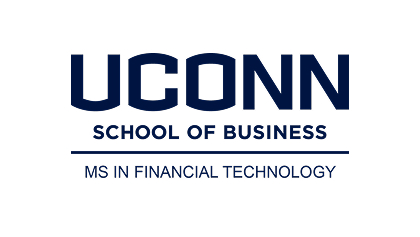
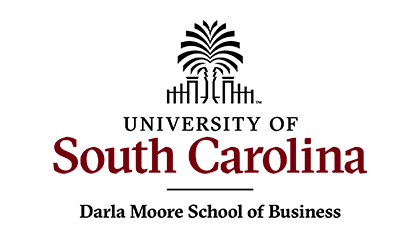




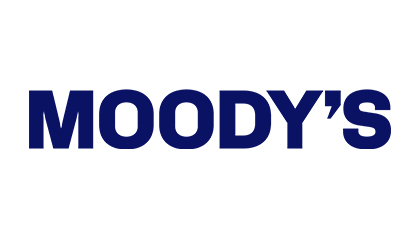
Related content
Labor Market Outlook: A Conversation with LinkedIn® Economist Dr. Kory Kantenga
In this session, we explored how economic and demographic changes are shaping the current labor market and how these trends could factor into your hiring and retention strategies in 2025.
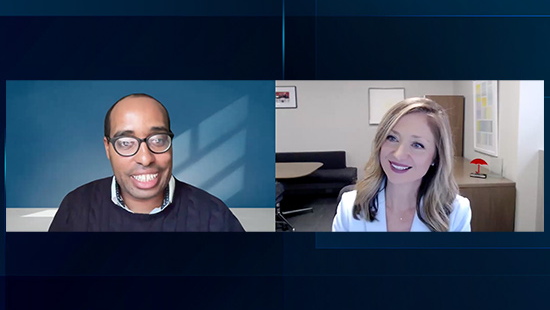
Geopolitical Risks and Global Hot Spots: A Conversation with Dr. Richard Haass
Veteran diplomat and respected international relations scholar Dr. Richard Haass joined us on Wednesdays with Woodward to discuss the current global landscape, share insights on geopolitical risks and weigh in on the state of American democracy.
